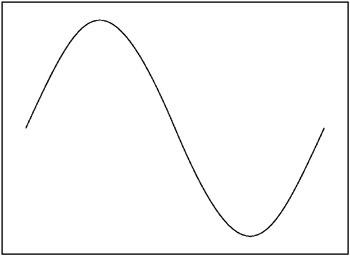Locally, at least in my neighborhood here in Valley Station, we fared somewhat better than the first bout of severe weather two weeks ago. Winds still were gusty all day long with peak gusts approaching 45 mph. But, no significant damage was found this time. Actually, damage from 2 weeks ago was not caused by severe thunderstorms but gradient winds with periodic gusts from 50-55 mph.
The intense line of thunderstorms raced eastward at speeds of at least 50 mph. Warnings were issued just west and southwest of my locations for potential wind gusts of 70 mph. As the line moved in, I was expecting a gusty rain shower. Instead, I got nearly the opposite. The skies momentarily brightened and winds actually abated. Yet, I can hear the roar of winds or heavy rain nearby similar to the distant sound of fast-moving traffic from an interstate. It was almost kind of eerie.
No snowflakes here. I really wasn't expecting any. But, the winds were quite brisk yesterday, easily negating any warmth from the sunshine. By the time I woke up this morning, I had a low temperature of 23 degrees and a thick frost. I even found some upper teens on the Kentucky Mesonet site.
Now, for the week ahead. Teleconnection signals still do not favor any type of wintry weather for the region. Yes, overall, we should still expect below normal temperatures, but not anything that unusual for the latter part of November.
The latest Euro run through next Monday keeps the coldest air to our north and northeast. However, shots of cold air are still going to affect the region, just not as cold as they could be.
The coldest air idea could be contingent on whether we establish any type of long-duration blocking near Greenland. So far, the GFS keeps waffling on this idea. A more negative NAO could help drive the coldest air more southward instead of north and northeastward. Nevertheless, we are still going to be affected by the cold air with mostly below normal readings.
For the period of November 25-December 03, temperatures are expected to range from near normal to below normal while precipitation is mostly below normal, according to the latest CPC outlook.
Longer range, the latest CPC outlook dated November 16 has the winter months of December through February coming in near normal to above normal while precipitation looks to be above normal for our region.
Last year on this date, we recorded a low of 27 degrees at Louisville International for its coldest reading for the month, that after a balmy 81 degree high on the 18th, just a couple of days earlier. Other locations in the state would see lows in the upper teens a couple of days later, like the 21st and the 22nd. So, really, it is not unusual to have cold mornings like this in November, not a big deal.
For you weather geeks out there who pay attention to October snow cover extent for forecasting the upcoming winter, there was another above normal reading for Eurasia...

In fact, this marked the 6th consecutive year of above normal anomalies.
The Northern Hemisphere SCE was the 9th largest out of the 50-yr record, nearly 21 percent above the 1981-2010 average. They too had a 6th consecutive above normal anomaly.
This should bode well for us snow lovers here in the United States. But, who and where will see the most snow this winter? There will be regions that see above normal snowfall this winter. Yet, we have to remember the drivers for this upcoming winter will ultimately determine the end result.
Remember last winter. We barely saw anything at all despite an above normal October Snow Cover Extent. Yet, some places were absolutely hammered, like the West and Northwest and parts of the Northeast. The have's and the have not's will be a feature of this upcoming winter as well.
That is all for now. Have a great week. Keep checking back as I continue gathering more data for the upcoming winter. I'm nearly ready to offer my brief winter outlook and in-depth December outlook soon.
MS

.png)

